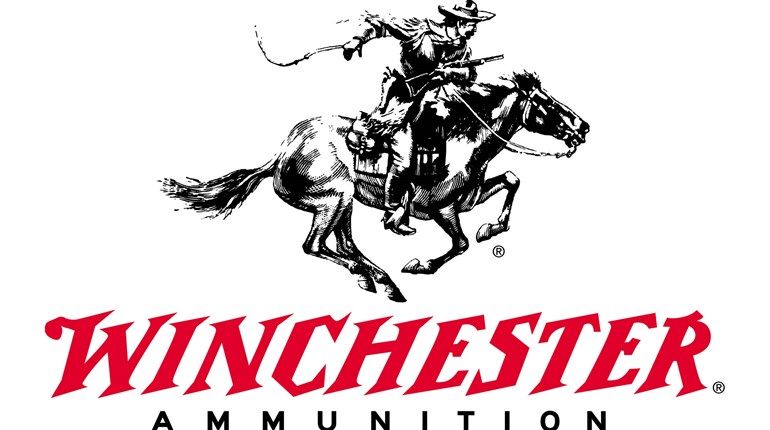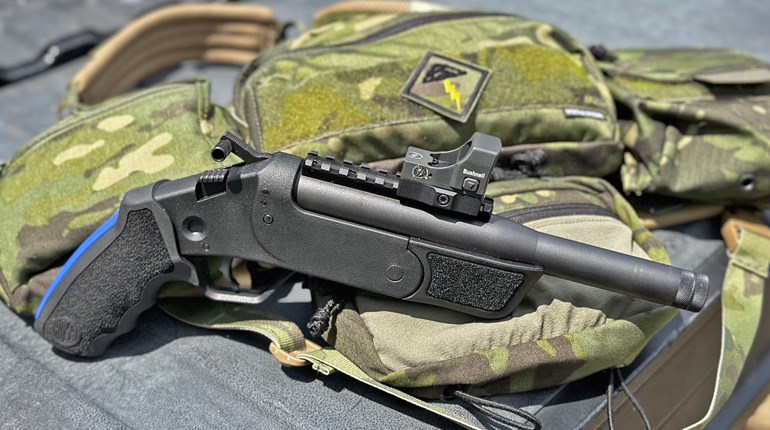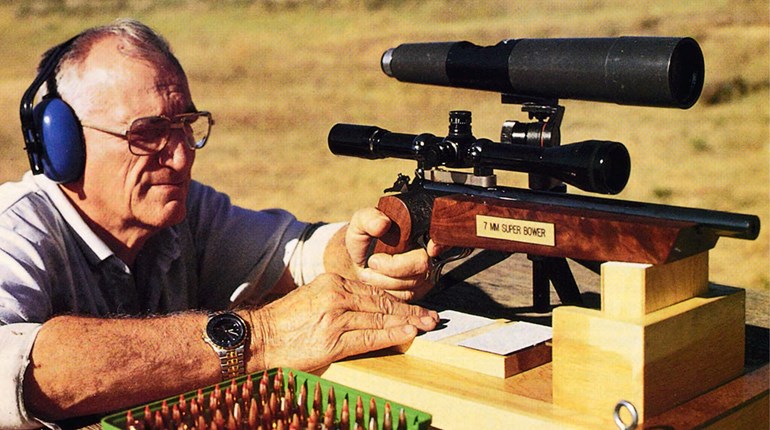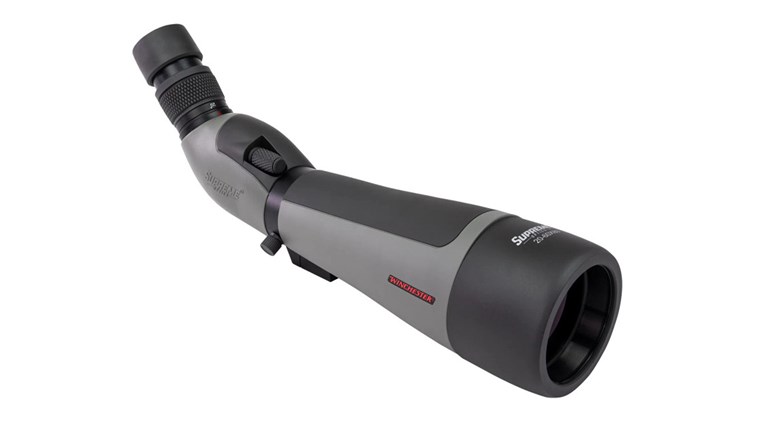
There is just something about the rearward thrust felt when I shoot a powerful firearm. Force ripples through my body—a sense of satisfaction in knowing that I can handle the recoil of any caliber or gauge that is on the market.
However, when it comes to hunting, I've always believed that shot placement is more important than caliber or gauge. In keeping with this belief, I seldom choose large-bore firearms to dispatch game. The largest caliber I have used to take a deer has been a .30-'06, and my Remington 870 in 3-inch has knocked down every turkey I have ever shot—except for the Eastern that I took with my Knight TK2000 on a U.S. Army Corps of Engineers primitive weapons hunt in Georgia.
While I've never believed that I needed anything more than a good 3-inch load to put down America's largest game bird, many turkey hunters use 3 1/2-inch loads for a variety of reasons. Bob Fountain, National Wild Turkey Federation (NWTF) Vice President of Training & Chapter Development, is one of these hunters.
"I don't know if 3 1/2-inch loads are worth the expense, but I patterned my 11-87 with both 3- and 3 1/2-inch loads and found that the 3 1/2-inch patterned better out of my gun and choke configuration," Fountain said. "I looked at the diameter of the pattern and I have a tighter pattern out to 40 yards with 3 1/2-inch loads. The main principle is shot placement."
Other turkey hunters, such as NWTF Regional Director Wayne Markland, use 3 1/2-inch loads because the additional pellet count is worth the heavier recoil in these hard-hitting shells. "I use 3 1/2-inch loads because they don't make a 4-inch," said Markland. "I weigh 300 pounds, so recoil has never been an issue, and the 3 1/2-inch sends a half-inch more pellets out the barrel and those pellets might be the ones to kill the turkey. So, if you can handle it, why not? I started with 3 1/2-inch and never considered using anything else."
Talking to hunters who prefer 3 1/2-inch turkey loads made me wonder if the additional power and shot count was really worth the extra pain in felt recoil, so I decided to sacrifice my shoulder to conduct a test to determine if the performance is worth the kick.
For this test, I chose a shotgun that could handle both 3- and 3 1/2-inch loads-the Remington VersaMax—along with turkey loads from both Remington and Federal. Pellet sizes had to be the same (No. 6s) to eliminate that discrepancy, and that point of aim also had to be consistent to show pattern, number of pellets in kill zone and trajectory drop out to a variety of ranges. I wanted to try and answer if 3 1/2-inch loads put more pellets into a turkey's head at the recommended ranges of between 20 and 40 yards, and if these powerful loads could actually extend the effective range of today's turkey shotguns, whether recommended or not, without factoring recoil, which is subjective.
For the distances, I decided to go with the accepted turkey hunting standards of 20 and 40 yards, along with two on the extended side (50 and 60 yards) and one that should probably never be tried in the field (75 yards). These ranges were chosen to show whether 3 1/2-inch turkey loads provide enough additional performance to warrant their use. Finally, after deciding to fire two 3-inch and two 3 1/2-inch loads from each manufacturer at every distance, I headed to the range to put my shoulder through the ringer in the name of science, even if it is only BullShooters science.
Range Results
As suspected, shots fired at 20 yards showed no advantage with 3 1/2-inch turkey loads. Every shot put more pellets into the Birchwood Casey Shoot•N•C turkey targets than could be counted, though I tried a couple of times, and provided heavily covered 14- to 16-inch patterns all around the head and neck area. At 20 yards, it doesn't seem to matter whether a hunter uses 3- or 3 1/2-inch loads for turkeys. It only matters whether he or she can aim.
At 40 yards, some differences emerged from the results, mainly from the additional number of pellets. The Remington Nitro 3-inch loads put 27 and 32 pellets respectively into the head and neck kill zone, while the Remington 3 1/2-inch loads counted 36 and 40 respectively. The Federal 3-inch loads placed 23 and 25 pellets into the turkey, while the count on the 3 1/2-inch Federals came to 38 and 52. As expected, the patterns expanded in accordance with the distance, but maintained consistency over the targets. There is no doubt that the 3 1/2-inch loads put more pellets into the target zone, with a statistical difference of about 28 percent for the Remington loads, while the Federal 3 1/2-loads put approximately 88 percent more pellets into the head and neck than their 3-inch counterparts.
When the targets were extended to 50 yards, the patterns remained consistent, but the center of all 3-inch patterns dropped 2 inches, with the Remington loads still putting down the bird with 17 and 22 pellets in the head and neck and the Federal 3-inch loads counting 16 and 20 in the kill zone. From the same distance, the 3 1/2-inch Remington loads placed 14 and 17 pellets in the zone, with the Federal 3 1/2-inch loads nailing the target with 16 and 18 pellets. Here is where the 3 1/2-inch loads started making a real difference as the pattern's center remained on target with less drop, though it did drop about an inch.
At 60 yards, the patterns of both the 3- and 3 1/2-inch loads continued to drop. In fact, the center of the pattern was difficult to determine, but it was obvious that 60 yards was on the extreme end of the effective range of every load. The Remington 3-inch shells put five pellets into the head and neck, while the 3 ½-inch loads put in seven and eight. The Federal loads ended up with a seven and eight pellets count for the 3-inch and eight and ten for the 3 ½-inch. In every shot, the pellets in the kill zone were sporadic and far apart, exhibiting in effectiveness at this range.
After setting up at 75 yards, both 3- and 3 1/2-inch loads fell apart. The patterns blew out with the majority of the pellets barely penetrating the cardboard backing holding the targets. While most of the loads put a few pellets in the head and neck—one 3 1/2-inch load scored a goose egg—none put a significant number in the kill zone with three being the highest pellet count. In fact, the pattern dropped, by my measurements, 12 to 14 inches with both 3- and 3 1/2-inch loads, and blew out to the point that the bird might die, but recovery would be unlikely.
Conclusion
The argument for 3 1/2-inch loads has always been more power and more pellets, but according to my results, there is very little difference between 3- and 3 1/2-inch turkey loads. Of course, I didn't test every brand or shot size, but it was pretty obvious that, at both 20 and 40 yards, a good pattern is more important that the shell's size. The 3 1/2-inch loads did show less pattern drop out to 50 yards, but beyond that, all loads quickly headed toward the ground.
While at the extended range of 50 yards, 3 1/2-inch turkey loads might make a small difference, but that difference doesn't negate the most important question of a turkey load: Does that load pattern well in your turkey shotgun? If your gun can handle 3 1/2-inch loads, and these loads pattern better than 3-inch loads and you can handle the recoil, then, by all means, use them. As for me, I'm sticking with 3-inch Remington 870 and pulling the birds within 40 yards.




































